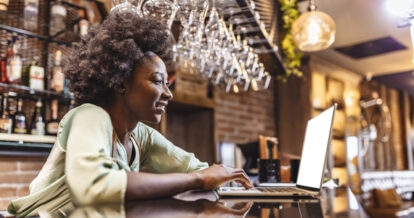Managing a multi-unit restaurant operation can be a complex task, as it demands great leadership, organizational, and communication skills. Running multiple locations is particularly complicated, because it requires managing multiple teams in multiple locations, all while maintaining consistency and quality across your entire operation. With these factors in mind, it’s critical to learn how to manage restaurant staff across multiple locations to avoid hurting your bottom line and ensure you’re delivering a consistent guest experience.
In this staff management guide, we’ll explain how to do exactly that by reviewing:
- The importance of strong restaurant staff management at all venues
- Providing tips on how to manage multiple teams
Get ready to learn how to lead a tight ship!
The Importance of Strong Restaurant Staff Management at All Venues
Restaurant management across all venues is pivotal and touches multiple points of a restaurant’s operation. A multi-unit restaurant requires strong staff management to help establish consistency across all locations to lead and motivate staff to execute their tasks well. Ultimately, providing consistent quality, top-notch service, and smooth operations across all venues.
There are multiple ways restaurant staff management can impact operations, including employee turnover, employee morale, productivity, recruitment, and customer satisfaction. Let’s conduct a deeper dive into how each of these factors are all crucial to operating a successful multi-unit restaurant.
Reduce Turnover
With the current restaurant industry turnover rate at 26%, according to our 2025 State of Restaurants Report, it’s important for restaurateurs to look into how their specific style of multi-unit restaurant staff management may contribute to their staff turnover rate.
Ideally, strong multi-unit restaurant staff management should create a supportive, safe, and positive environment for employees. With a 2023 survey reporting that 82% of employees say they value employers to see them as a person, not just an employee, it’s more critical than ever to lead with transparency and spend the time to make your employees feel valued. When employees feel positive about their workplace, this can help to reduce turnover rates across all your locations.
This support can also come in the form of tangible perks, not just a positive work environment. “78% of employees [say] they are more likely to stay with their employer because of their benefits program,” according to an article published by HR Daily Advisor, suggesting that multi-unit restaurant brands can also benefit from employing employee retention strategies, like benefits programs, to reduce turnover. These benefits can include healthcare and dental benefits, as well as tuition reimbursement – all of which are especially helpful during a time when the cost of living is so high.
Reducing turnover is also essential from a revenue perspective. The average restaurant loses an estimated $150,000 per year due to staff turnover in the form of recruitment costs, lost productivity costs, and more, according to the National Restaurant Association. And if you operate a multi-unit restaurant, your labor costs are multiplied, meaning the impact on your bottom line is even more pronounced. As a result, reducing turnover across your restaurant locations can lead to huge cost savings.

Increase Morale
A good restaurant manager, along with the rest of your management team, should lead and encourage through ways that can improve employee morale. When staff feel like they’re being seen, heard, and supported, they’ll be more likely to have a positive attitude towards their work. That positive attitude exuded from your employees will then translate into excellent customer service for your customers. According to Forbes, employees who feel heard are 4.6 times more likely to feel empowered to put their best foot forward at work, so it’s worthwhile taking the time to listen and support your staff.
A few ways restaurant management can do this is by taking the time to get to know their staff, considering their work-life balance, and incorporating a fun element into each shift. One tool that can be used to motivate staff and boost morale across all your venues is a staff training manual. By following a standardized set of processes, you’ll be setting a consistent tone for new hires and outlining for staff how management will incorporate these leadership practices to boost employee morale consistently across all locations.
Greater Productivity
When management staff recognize their employees and give credit where it’s due, it can be the key to leading more productive teams. In fact, employee recognition from management can “ignite a 69% increase in the likelihood of employees bringing extra effort to the work floor,” according to an article by the Great Place To Work.
Management that also knows how to set goals, prioritize tasks, and delegate can ultimately increase greater productivity within their employees. For example, eliminating inefficiencies through learning what your staff’s strengths are and how certain tasks can be adjusted to allow for learning opportunities will ensure more efficient operations. And when you apply this practice across the board at all your locations, your restaurant can reap the benefits of a stronger and more productive team across the entire business.
Easier Recruitment
The restaurant industry is a small world, so it’s important to create a reputation that your restaurant is known as a great place to work and is seen in a positive light. Having staff management that prioritizes communicative, patient, and strong leaders can ultimately bolster the recruitment process. If there is no negative connotation associated with your brand, then recruiting new staff can be infinitely easier.
As tough as it is to hire for one location, managing a multi-unit restaurant means filling even more positions and a positive brand image can significantly help ease that process. Having a strong, well-established reputation as a great place to work makes it an infinitely smoother process to hire at any of your current locations or to fully staff a brand-new location,
A Better Customer Experience
Strong staff management cultivated through the ability to lead and motivate can improve the experience of your staff, which ultimately leads to better treatment and service for your customers. This is especially true for multi-unit restaurants, due to staff members commonly working at more than one location. In turn, a stronger leadership team can foster better customer service across not just one, but all your locations.
With standardized staff management, customers will receive consistent service, no matter what location they choose to visit. Let’s say you operate a steakhouse and the staff at your restaurant are trained to recommend a wine pairing that will pair well with whichever steak your guests choose. Your staff are trained to do this, not only at one location, but across all locations. This way guests can expect to receive that same experience at any of your steakhouse locations.
How to Manage Multiple Teams Across Several Locations
Now that we’ve covered the importance of strong staff management at multi-unit restaurants, let’s take a look at essential restaurant management tips for how to manage restaurant staff successfully across multiple locations.
1. Hire a Multi-Location Manager or Area Manager
One of the most important restaurant management tips is to hire a multi-location or area manager to be your eyes and ears in the field, since it’s impossible to be in two (or more!) places at a time. By hiring a multi-location manager, you’ll have someone to manage the ins and outs of operating each location, or an area manager to oversee a specific group of locations. For instance, if you own and operate restaurants across the U.S., you can have an area manager for your West Coast operations and one for your East Coast operations.
The right multi-location or area manager should have past experience overseeing multiple venues and know how to manage multiple teams across several locations all at once. This manager needs to possess certain team leadership skills to successfully lead a productive and efficient staff operation. A valuable skill they should have is the ability to use staff scheduling software efficiently and smoothly, so they can coordinate staff across all locations and make updates to the schedule when needed – all while keeping an eye on your labor costs. This will ensure all restaurant locations are staffed at all times, reducing the chance of a shortage and a poor customer experience. Additionally, a great multi-location or area manager should also possess the ability to implement and execute consistent training processes across all locations, so that staff are trained in the same way and you can offer a consistent diner experience at all your venues.
2. Set Goals
Another strategy for how to manage restaurant staff well is having a crystal clear vision for your operations. Great staff management paired with set goals and expectations can do wonders for your restaurant operations. Setting clear goals that can be effectively trickled down to staff members can help them focus and be productive. It can also help encourage staff to be more productive by building a sense of accomplishment when they reach their goals.
An example of a short-term goal is to increase holiday sales at all restaurant locations that were underperforming last year. You can take the time to compare sales data across all your locations and set targets accordingly. Once this goal has been established and discussed with staff across all your venues on ways to achieve this, they can then go ahead and work towards achieving it.
3. Establish Consistent Processes and Training
The main part of running a well-oiled machine is having well-established processes and training in place for all staff members, including new hires and ongoing training efforts for current staff. The key to learning how to manage restaurant staff well is consistency across all locations.
Both a comprehensive restaurant training manual and restaurant employee handbook can ensure consistency across all venues. A restaurant training manual can help train new hires quickly and efficiently, no matter which location they start at. This document can include everything from training, roles and responsibilities, health and safety procedures, and much more.
On the other hand, a restaurant employee handbook can be used to help your staff understand what is expected of them and what they can expect from their employer at each of your venues. It can cover anything from the company’s core values to workplace behavior.
If both of these guides are used consistently across all venues for new hires, it can ensure staff have been trained and onboarded the same way.
In turn, establishing consistent processes ensures that when someone dines at any of your locations, they will receive consistent service. For example, your staff can be trained to offer your restaurant’s signature dessert at no cost to the guest when celebrating a birthday or special day. If that same guest visits another location, they can expect to receive that same free perk.

4. Use the Same POS System
Technology, specifically a modern point of sale system (POS), is a phenomenal way to help your restaurant run smoothly and efficiently, especially across multiple restaurant locations. Today’s powerful POS systems are built to help restaurateurs increase sales, deliver a great guest experience, and save time and money, all with the needs of multi-unit restaurants in mind.
Ideally, you want to choose a modern, cloud-based POS system equipped with multi-location functionality to help ease operational processes, such as executing menu and staffing changes en masse. And thanks to the power of the cloud, you can make all these changes across your venues remotely, without having to be physically present at each location. Using a centralized system also means the ability to pull reports on sales data at each location and see where improvements can be made. The convenience of the cloud and managing everything through a single platform is a huge plus, especially for multi-location operators juggling competing business priorities.
5. Automate the Scheduling Process
A restaurant labor management solution, like TouchBistro Labor Management, helps simplify and automate the scheduling process. This is evident when building your schedules week over week. Thanks to scheduling automations, you can create schedules based on forecasting labor, which requires no manual work on your end. TouchBistro Labor Management pulls data directly from your POS system in near real-time, so you’re no longer pulling the data yourself. Once you’ve completed your schedules, you can seamlessly notify your team through in-app messages or through SMS.
Automating the scheduling process with one of the best restaurant scheduling software can be especially beneficial if you manage teams across multiple locations. Using a centralized platform across more than one location allows you to seamlessly schedule staff who work at more than one location, all while keeping track of their availability and blocked dates. Plus, staff can view their work schedule, pick up any open shifts, and swap shifts if needed. This creates the ultimate flexibility for team members, making staffing changes as smooth as butter.
6. Open Up Communication
In addition to using the same POS system and staff scheduling software across all your restaurant locations, you also want to use the same communication tool, like 7shifts, Google Chat, or Slack.
Using the same communication tools ensures all your staff can get in touch with one another, regardless of which location they may be at. Let’s say that someone is unable to make it to their scheduled shift, perhaps someone who usually works at a different location is able to take over their shift. A communication tool can help coordinate and execute this change smoothly. It can also help a multi-location manager or area manager keep in touch with their dedicated venues and its staff, especially since visiting each location in person all the time is not feasible.
7. Bring Staff Together
Fostering a sense of togetherness and community among your staff can be one of the greatest things you can do for your restaurant’s success. As a restaurant manager or owner, taking it a step further beyond the actual work and making your staff feel appreciated can go a long way.
For example, hosting employee appreciation days, or team building events with staff across all locations, can help bring staff together – especially those who don’t work together regularly. This kind of initiative gives staff the opportunity to get to know each other outside of a work environment and develop more personal connections. In turn, these closer bonds can have a positive impact in the workplace, improving teamwork and communication skills.
8. Collect Feedback
Lastly, to manage multiple restaurant locations well, you have to be open to feedback, improvement, and growth that can impact operations company-wide. One way to do this is to collect feedback from employees across all locations, not just at one or two individual venues. As a leader, it’s important to express to your staff that you’re open to feedback, so they feel comfortable communicating ways to improve operations and staff management.
Let’s say staff from across your many locations are all that they would like more professional development opportunities. As a management team, you can set up a mentorship program, arrange workshops, extra training sessions, or even pay for formal education to provide staff with these additional development opportunities.
Your multi-restaurant staff are a key component of operating your network of restaurants and how well they are managed can certainly impact how well your business does. Now that you know how to manage restaurant staff and are armed with some tips for better multi-location restaurant management, you’re better prepared to run a more successful restaurant empire.
Download your free employee handbook template
Sign up for our free weekly TouchBistro Newsletter







